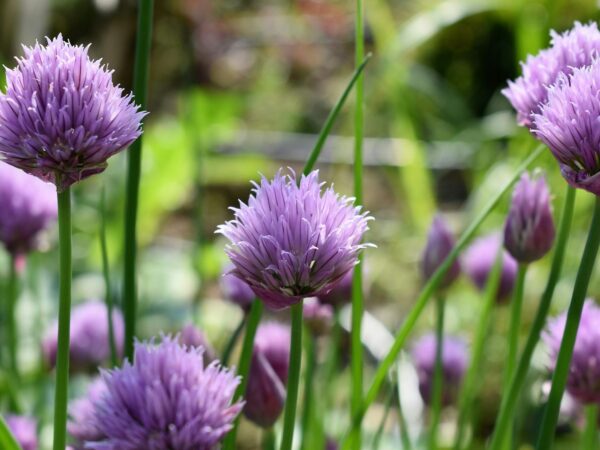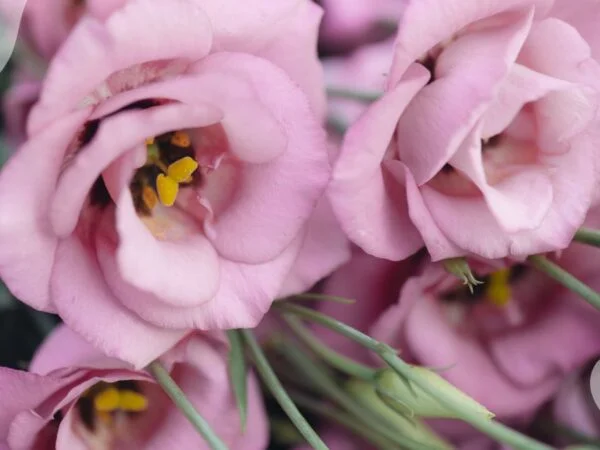Did you know that orchid cacti can bloom multiple times a year? These stunning plants are not just beautiful; they’re also low-maintenance and perfect for beginners. Mastering the care of orchid cactus, including epiphyllum bloom and flower pot cut techniques, is easier than you think. With the right light, water, and potting mix, you can enjoy vibrant blooms in your home.
Understanding their unique needs ensures your orchid cactus thrives. This guide will cover essential tips on watering, lighting, and feeding to keep your plant healthy. Whether you're a novice or an experienced gardener, these insights about potting will help you create the ideal environment for your orchid cactus. Get ready to transform your space with these gorgeous plants!
Key Takeaways
-
Choose the Right Spot: Place your orchid cactus in a location with bright, indirect light to help it thrive, as discussed in the Positioning and Light Needs section.
-
Water Wisely: Water your orchid cactus only when the top inch of soil feels dry. This helps prevent root rot, as highlighted in the Watering Guidelines.
-
Use Proper Soil: Opt for a well-draining potting mix to ensure healthy growth, which is emphasized in the Soil and Potting section.
-
Fertilize Regularly: Feed your orchid cactus with a balanced fertilizer during the growing season to encourage vibrant blooms, as suggested in the Fertilizing Tips.
-
Maintain Ideal Conditions: Keep your orchid cactus in temperatures between 60-80°F and provide humidity to promote healthy development, as noted in the Temperature and Humidity section.
-
Watch for Pests: Regularly check for pests and diseases to keep your plant healthy and thriving, following the advice in the Pest and Disease Control section.
Understanding Orchid Cactus
What is Orchid Cactus
Orchid cactus refers to a group of tropical succulents known for their large, showy flowers. These plants belong to the genus Epiphyllum. They thrive as epiphytes, meaning they grow on other plants instead of in soil. This unique growth habit allows them to absorb moisture and nutrients from the air and rain.
Their appearance stands out with trailing, leaf-like stems. These stems can be flat and wide, giving the plant an unusual look. The flowers bloom at night, attracting pollinators like moths. Colors range from white to vibrant pinks and reds.
Common Types
Several popular species and hybrids exist within the orchid cactus group. One well-known species is Epiphyllum oxypetalum. This type produces stunning white flowers that open at night.
Different types exhibit a variety of flower colors and shapes. Some have tubular blooms while others display wide petals. Care requirements can vary among species. Some may need more sunlight than others, while some prefer shadier spots.
Other notable species include Epiphyllum anguliger and Epiphyllum crenatum. Each has its own unique features and care needs. Understanding these differences helps in providing proper care for each type.
Growth Habit
Orchid cacti feature long, flat, leaf-like structures. These stems can trail and grow up to 60cm (2ft) long. This growth habit allows them to spread beautifully in pots or hanging baskets.
Their structure resembles that of Christmas cacti but with distinct differences. Orchid cacti have broader leaves and larger flowers. This resemblance makes them popular choices for indoor gardening.
These plants adapt well to indoor environments. With the right care, they thrive indoors and produce beautiful blooms. Proper light exposure plays a crucial role in their growth.
Positioning and Light Needs
Ideal Placement
Orchid cacti thrive in warm, humid environments. These conditions mimic their natural habitats in tropical regions. Placing them in areas with good airflow helps them grow better. Hanging baskets are a great choice for these plants. They allow the trailing growth to be showcased beautifully.
Avoid placing orchid cacti in direct sunlight. Too much sun can scorch their delicate leaves. Instead, choose locations that provide filtered light. This ensures they receive adequate brightness without the harsh effects of direct rays.
Light Requirements
Orchid cacti need bright, indirect light to flourish. Full sunlight can hinder their growth and blooming process. Without enough light, the plant may become leggy and weak. Healthy plants produce vibrant blooms, so proper lighting is crucial.
Rotating the plant periodically can help maintain even light exposure. This practice prevents one side from becoming too stretched or weak. Regularly checking the light conditions will keep your orchid cactus thriving.
Seasonal Adjustments
Adjusting care routines based on seasonal changes is essential for orchid cacti. During winter, days are shorter and temperatures drop. Indoor lighting might not be sufficient for growth during this time. It's important to monitor how light availability changes throughout the year.
Temperature fluctuations also affect plant health. Keeping orchid cacti in a stable temperature range is vital. Humidity levels can vary with seasons too. Maintaining higher humidity during dry months supports healthy growth.
Pay attention to your orchid cactus's needs as seasons change. Make necessary adjustments to light and humidity for optimal care.
Watering Guidelines
Frequency and Amount
Watering frequency changes between the growing season and dormancy. During the growing season, typically from spring to summer, water more often. This period lasts around six months. Water when the top inch of soil feels dry. In contrast, during dormancy in fall and winter, reduce watering significantly.
Before watering, check the soil moisture with your finger. This simple test helps prevent overwatering. Consistent moisture is key for orchid cacti, but avoid waterlogging. Too much water can harm the roots.
Best Practices
Regular monitoring of plant health is essential. Check for signs of stress or poor growth. Environmental conditions also play a significant role in care. Use a well-draining soil mix to promote healthy root growth. A mix containing perlite or sand works best.
Maintaining humidity levels mimics their natural rainforest environment. Mist the plant or place it near a humidifier. This practice helps keep the plant thriving.
Signs of Overwatering
Yellowing leaves often indicate overwatering issues. Mushy stems are another clear sign that something is wrong. These symptoms suggest that the roots may be suffering from excess moisture.
Root rot can develop quickly in overly wet soil. It can lead to serious damage if not addressed immediately. Adjust watering habits as soon as you notice these signs. Taking action early can save your orchid cactus from further harm.
In summary, proper watering techniques are crucial for orchid cactus care. By following these guidelines, you can help ensure your plant remains healthy and vibrant for years to come.
Soil and Potting
Soil Mix
A specialized cactus or succulent potting mix works best for orchid cacti. This type of soil provides optimal drainage, which is crucial for these plants. Adding perlite or orchid bark improves aeration and drainage. Both materials help prevent water from pooling around the roots. A well-draining medium is essential to avoid root rot. Without proper drainage, roots can suffer and lead to plant decline.
Pot Selection
Choose pots with drainage holes. These holes allow excess water to escape, reducing the risk of overwatering. Select a pot size that fits the plant's growth needs without crowding its roots. A crowded pot can hinder growth and health. Lightweight pots are beneficial for easier handling and moving the plant as needed. They make it simpler to reposition your houseplants in your home or garden.
Re-potting Steps
Re-potting requires careful steps to protect your orchid cactus. Start by safely removing the plant from its current pot. Gently loosen the roots to avoid damage during this process. Inspect the roots for any signs of injury or decay. Healthy roots should appear firm and white, while damaged ones may look brown or mushy. Trim any unhealthy roots before re-potting.
Once ready, place the orchid cactus into a slightly larger pot filled with fresh soil. Ensure that the new pot has good drainage as well. After placing the plant, fill in around the roots with more soil, making sure not to pack it too tightly. This helps maintain aeration while providing support for growth.
Fertilizing Tips
Type of Fertilizer
Using a balanced liquid fertilizer is essential for orchid cactus care. These fertilizers are specifically formulated for cacti. They contain equal parts of nitrogen, phosphorus, and potassium, which support overall plant health.
Select a low-nitrogen formula to encourage flowering. High nitrogen can promote leaf growth at the expense of blooms. Organic fertilizers also offer benefits. They improve soil structure and provide slow-release nutrients. This promotes healthy growth over time.
Application Frequency
Fertilize your orchid cactus during the growing season, which lasts from spring to early fall. Apply fertilizer every 4-6 weeks during this period. This frequency supports the active growth phase.
Avoid fertilizing during dormancy in late fall and winter. Nutrient buildup can harm the plant during this rest period. Follow package instructions for dilution rates and application methods closely. Proper dilution ensures that the plant receives the right amount of nutrients without burning its roots.
Seasonal Considerations
Fertilization needs change with the seasons. In spring and summer, plants actively grow and require more nutrients. Increased fertilization during these months helps support new growth and flowering.
Reduce fertilization in fall and winter. Many plants enter dormancy during these months. Lower nutrient levels prevent stress on the plant when it is not actively growing. Understanding seasonal growth patterns aids in determining when to apply fertilizer.
Temperature and Humidity
Ideal Temperature Range
Orchid cacti thrive in temperatures between 10°C (50°F) and 30°C (86°F). These plants prefer warmth, as they originate from tropical rainforests. Exposure to temperatures below 10°C (50°F) can damage the plant. This damage can manifest as wilting or stunted growth.
Stable temperatures are crucial for orchid cacti. Sudden fluctuations can stress the plant. For example, moving them from a heated greenhouse to a cold room may shock them. It is best to keep them in a consistent environment.
Humidity Levels
Maintaining humidity levels between 50% and 70% is vital for optimal growth. Orchid cacti need humid air to flourish. In dry environments, using a humidity tray or misting can help increase moisture. A simple tray filled with water and pebbles can create a humid microclimate around the plant.
Low humidity can lead to stress and poor flowering. Symptoms of low humidity include shriveled leaves and reduced blooming. Regularly checking humidity levels helps ensure your orchid cactus remains healthy.
Adjusting Conditions
Gradual adjustments to light and humidity are essential. Rapid changes can shock the plant, causing it to struggle. Monitor environmental changes closely and respond accordingly. If moving the plant, do so slowly over several days.
Using hygrometers allows you to measure humidity levels accurately. These devices provide real-time readings of the air's moisture content. Keeping track of these levels helps maintain an ideal environment for your orchid cactus.
Encouraging Blooming
Blooming Season
Orchid cacti typically bloom from early spring to midsummer. During this time, you may see vibrant flowers. However, blooms are often short-lived. They can last only a couple of days. Light and temperature play significant roles in this process. Bright, indirect sunlight helps the plant prepare for blooming. Temperatures between 65°F and 80°F promote healthy growth. Too much heat or cold can hinder flowering.
Flowering Conditions
Adequate light and humidity are essential for encouraging flowering. Orchid cacti thrive in environments with around 50-70% humidity. This moisture helps trigger blooms. Proper watering also influences flowering. Water the plant when the top inch of soil feels dry. Overwatering can lead to root rot, which prevents blooming. Fertilization is another key factor. Use a balanced fertilizer every month during the growing season. This practice provides nutrients that support healthy blooms.
A stress-free environment is crucial for successful flowering. Avoid moving the plant frequently, as it can cause shock. Consistency in care promotes better growth and blooming.
Deadheading Flowers
Removing spent flowers is vital for encouraging new growth. This process is known as deadheading. It involves cutting off faded blooms to make room for fresh ones. Use clean, sharp scissors to avoid damaging the plant. Cut just above the first leaf below the flower stem. This method helps maintain the plant's appearance.
Deadheading also directs energy back into the plant's growth instead of wasted blooms. Regularly checking for spent flowers ensures your orchid cactus remains healthy and attractive.
Pest and Disease Control
Common Pests
Orchid cacti face threats from various pests. Mealybugs and spider mites are two common culprits. Mealybugs appear as small, cotton-like masses on the plant. Spider mites create fine webs that can cover the cactus. Regular inspections help catch these infestations early. Check under leaves and around stems for signs of pests.
Using insecticidal soap or neem oil is effective for pest control. Both options are safe for your plants and the environment. Apply these treatments according to package instructions. Repeating applications every week may be necessary until the pests are gone.
Disease Identification
Diseases can also affect orchid cacti. Symptoms of root rot include yellowing leaves and mushy roots. Fungal infections may show as dark spots on the plant surface. Identifying these issues early is crucial for effective treatment.
Maintaining proper care is vital to prevent diseases. Ensure your orchid cactus has well-draining soil and avoid overwatering. Too much moisture leads to root rot and other problems. Observe your plants regularly to catch any changes in health.
Treatment Methods
Treatment methods vary based on the disease type. For root rot, remove affected parts of the cactus immediately. Use clean scissors to avoid spreading infection. In cases of severe fungal infections, consider using fungicides or bactericides. Follow the instructions carefully when applying these chemicals.
Improving air circulation around your orchid cactus helps prevent future issues. Place plants where they receive ample light and airflow. Good drainage is essential too; use pots with holes at the bottom to allow excess water to escape.
Propagation Methods
From Cuttings
Propagation from stem cuttings is a popular method for orchid cacti. First, select healthy stems. Cut them into sections that are at least a few inches long. After cutting, allow the ends to callous for about 1-2 days. This step prevents rot when planted.
Once calloused, plant the cuttings in well-draining soil. A cactus mix works best. Keep the soil slightly moist but not wet. Place the cuttings in a warm and humid environment. This can be achieved by covering them with a plastic bag or placing them in a greenhouse. Monitor them closely until roots develop.
From Seeds
Propagating orchid cacti from seeds requires careful planning. Start by selecting high-quality seeds from a reliable source. Prepare a sterile potting mix to prevent diseases. Fill small pots with this mix and lightly moisten it before planting.
Sprinkle the seeds on top of the soil without covering them. They need light to germinate. Maintain proper moisture levels, ensuring the soil stays damp but not soggy. Covering the pots with plastic wrap can help retain moisture and warmth.
Be patient during this process. Germination can take several weeks to months. Seedlings will emerge slowly, so regular checks on moisture and temperature are essential.
Best Time to Propagate
The best time to propagate orchid cacti is during their growing season. Spring is particularly ideal due to increased light and warmth. During this time, plants are more active and can heal faster after propagation.
Before starting, check the overall health of your orchid cactus. Healthy plants have better chances of successful propagation. Look for signs of pests or diseases, as these can hinder growth.
Pensamientos Finales
Caring for your orchid cactus can be a rewarding experience. You’ve learned the essentials, from light and watering to pest control and propagation. Each step you take helps your plant thrive, showcasing its unique beauty. Remember, the right environment and care lead to stunning blooms.
Now it’s time to put this knowledge into action. Regularly check your plant's needs and adjust as necessary. Share your successes with fellow plant lovers. Your orchid cactus deserves the best care possible, and you have what it takes to provide it. Happy gardening!
Frequently Asked Questions
What is an Orchid Cactus?
An Orchid Cactus, also known as Epiphyllum, is a tropical plant famous for its stunning flowers. It thrives in warm climates and is often grown indoors or in greenhouses.
How much light does an Orchid Cactus need?
Orchid Cacti prefer bright, indirect light. Too much direct sunlight can scorch their leaves, while too little can hinder blooming. Aim for filtered light for optimal growth.
How often should I water my Orchid Cactus?
Water your Orchid Cactus when the top inch of soil feels dry. Typically, this means watering every 1-2 weeks, depending on humidity and temperature. Avoid overwatering to prevent root rot.
What type of soil is best for Orchid Cacti?
A well-draining potting mix is ideal for Orchid Cacti. Use a blend designed for cacti or succulents, or create your own with peat moss, perlite, and coarse sand.
When should I fertilize my Orchid Cactus?
Fertilize your Orchid Cactus during the growing season (spring and summer) with a balanced liquid fertilizer diluted to half strength. This promotes healthy growth and vibrant blooms.
What temperature and humidity levels are ideal for Orchid Cacti?
Orchid Cacti prefer temperatures between 60°F and 80°F (15°C to 27°C). They thrive in moderate humidity levels, around 40-60%. Ensure good air circulation to prevent mold.
How can I encourage my Orchid Cactus to bloom?
To encourage blooming, provide adequate light, maintain proper watering, and fertilize during the growing season. A slight drop in temperature at night can also stimulate flower production.
Image Source: Paid image from CANVA




